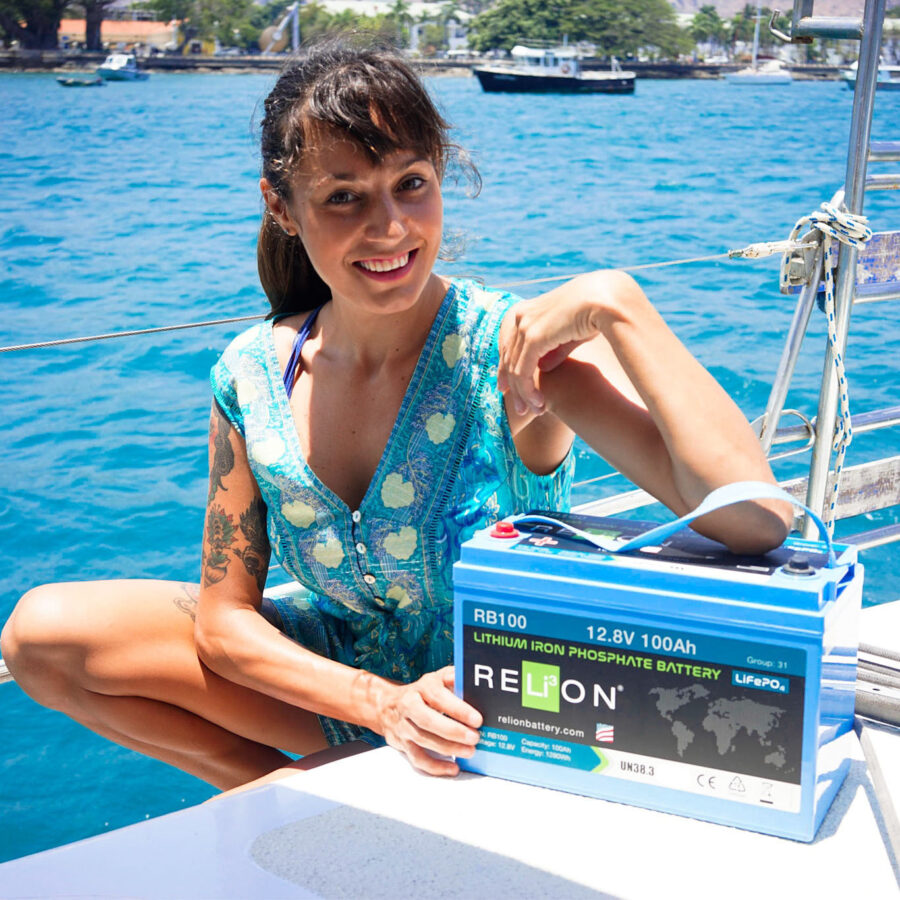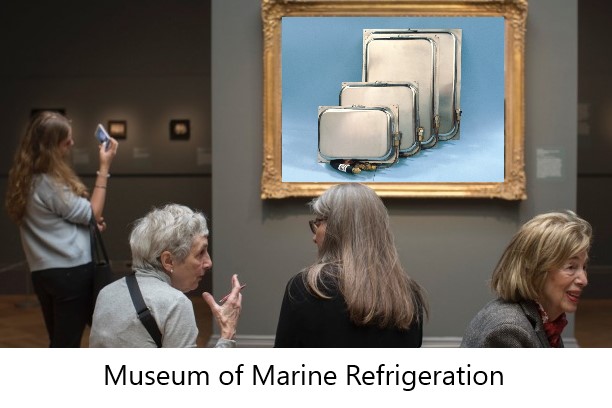Phone: (301) 352-5738
Email: info@CoastalClimateControl.com
Office | Warehouse:
1598 Whitehall Road, Suite D
Annapolis, Maryland 21409
We often get asked about the latest developments in solar technology, and when will they be available, if suitable, for boat applications. I am by no means a solar expert, geek would be more appropriate, but I do keep my ear to the ground and try to keep up with the latest developments.The people at the National Renewable Energy Laboratory (NREL) make this a lot easier by publishing their chart (below) of research cell efficiencies for various solar technologies. This shows the state of play of the very best of the best cells available of each type of solar, measured by their efficiency, i.e. how much of the available solar irradiance is converted into electrical power. Here's a quick synopsis of the chart.
In my kitchen at home we use cooking pots and pans made from a variety of metals, and I thought it would be an interesting project to delve into the pros and cons of each material and then go on to see how that works with refrigerator evaporators.After all, cooking pots and fridge evaporators both utilize metal surfaces to transfer heat, so many similarities exist.When cooking on the stove, we're conducting heat from an external source (the burners), through the material of the pot or pan to the contents in the interior.Simple enough you'd think, but different metals have different characteristics, and work in different ways. The ability of a material to transfer heat is known as its Thermal Conductivity. This is quoted in various units, but here we'll use good old fashioned BTU's per hour per foot per degree Fahrenheit (Btu/hr-ft-F).Listed below are some of the common metals used for cooking pots and pans together with their Thermal Conductivity rating, starting with the most conductive and ending with the least. Basically, the higher the number, the more heat the material will conduct through it
Here's a fact: Heat travels in one direction only; from warm to cold. So if a temperature difference exists between two items, the warmer item will lose heat to the cooler item; so the warmer item gets colder, the colder item gets warmer.
Simply put, when we put warm beers into a cooler of ice, we don't actually cool down the beer as much as warm up the ice! When heat leaves the beer for the ice, the beer gets colder as a result, and soon the contents are all at a wonderfully refreshing 32F temperature. And thanks to the laws of science and beerology, everything will stay that way until all the ice has melted and the beer has been consumed.
And now here's a conundrum: Should you endeavor to keep your fridge and freezer as full as possible in an effort to save power usage?
"Icing Down the Beer" vs "Beering Up the Ice"
Here's a fact: Heat travels in one direction only; from warm to cold. So if a temperature difference exists between two items, the warmer item will lose heat to the cooler item; so the warmer item gets colder, the colder item gets warmer.
Simply put, when we put warm beers into a cooler of ice, we don't actually cool down the beer as much as warm up the ice! When heat leaves the beer for the ice, the beer gets colder as a result, and soon the contents are all at a wonderfully refreshing 32F temperature. And thanks to the laws of science and beerology, everything will stay that way until all the ice has melted and the beer has been consumed.
But what about your refrigerated ice box? Isn't it always being kept cold?
Did you know that there is an official measurement for a hairs breadth? Well, according to my conversion tables:
one hairs breadth = 100 microns (micrometers, millionths of a meter)
So the thickness of a regular silicon solar cell, at around 200 microns, or 2 hairs breadths, is pretty darn thin! And when you consider that the SunPower® back-contact cells that are used by Solara and Solbian are even thinner, at about 1.5 hairs breadth, and that these cells are essentially glass in nature, you will no doubt appreciate that they will need careful handling.
The SunPower® cells used in Solbian flexible panels are high grade cells that are purchased guaranteed free from physical defects, but careless handling in storage, shipping or on site, together with improper installation, can initiate cracks in the cells which will be invisible to the naked eye.
In the majority of applications these cracks will be comparatively harmless and may not cause any problems other than a small loss of power, but
We spend considerable time and effort trying to help boat operators understand how to look after their batteries, but we still hear of way too many premature deaths. So in an effort to get the message across from a different angle, we offer the following advice on how to inflict serious harm and punishment on expensive batteries without really trying.Simply put, there are three main types of abuse you can employ to kill or maim your batteries:
Excessive heat
Physical damage (including vibration), and
Poor charging routines
The first two I hope to be self explanatory, but the third requires some detailed explanation.
Flooded lead acid batteries, including AGM's, don't like being left for extended periods in a partially charged state. Doing so allows some of the lead sulfate crystals that form naturally on the negative plate during the discharge process to harden to the point where they can't then be dissolved the next time the battery is charged. This is known as sulfation which leads to an increasing loss of useable capacity as more and more crystals harden.
I recently had an air conditioning system replaced at my house. Out went the old energy hog with a noisy, fixed speed compressor, and in came a high efficiency unit with a quiet compressor and fan, both of which run at variable speeds. So, today’s question is: Why does varying the compressor speed increase efficiency, and how is that achieved?
Golden Rule: The longer and slower a compressor can run, the more efficient it will beEfficiency in refrigeration and air conditioning systems is measured as a ratio of power out to power in, and can be in several forms. The Energy Efficiency Ratio (EER) is the ratio of output cooling energy in Btu’s to input electrical energy in watts under certain fixed conditions. So a system with an EER rating of 10 will produce 10 Btu’s of cooling for every watt of power consumed under the specified conditions. The Seasonal Energy Efficiency Ratio (SEER) that is used in commercial and residential equipment is similar to the EER, but is assessed over time and under varying conditions.
When a fixed speed compressor is operating under light-load conditions, i.e. nighttime, cool weather, etc., a fixed-speed compressor will be running for short spurts and do a lot of cooling in a hurry, which is inherently very inefficient. If we were to be able to slow the compressor down during periods of light load, the system would run longer and be more efficient overall, but would still have the required capacity available for high heat-load conditions.
At dealer technical training sessions run by marine equipment manufacturers, typically the last item on the agenda before everyone heads off home is the matter of warranty.The cynical among us might think that this is so timed that it can be rushed through at the last minute so the factory staff can shrink from the baying crowd and make a swift retreat, and that may not be too far from the truth. But why is it sometimes such a contentious subject?From a new-boat owner's perspective, it is entirely reasonable for him or her to assume that if anything fails on a newly purchased vessel within the warranty period it will be replaced or repaired without too much fuss and bother.But, unlike an automobile where the car dealership is responsible for repairs to every item on the vehicle, equipment on pleasure craft is supplied by individual manufacturers, each with their own warranty policy.
Here at Coastal Climate Control, we talk to a lot of boat owners, at shows and in the course of daily business, and in general most of the people we talk to who have wind generators seem to be less than ecstatic about their performance.
We commonly hear gripes that what these device's specifications promise on paper seldom seem to materialize in real life application. And then the cost, complexity, and effort of installing wind generators apparently put a lot of people off, not to mention the unease of having sharp-edged blades whirling away within a daggers-throw of one's head!
Some wind generator owners report that their systems perform well on passage, when the boat is beating into the wind, although it is well known that gentlemen never go to windward ... but then when the destination is reached and the hook dropped in the sheltered anchorage of an island, the wind generator seems rarely to have the oomph needed to fully charge the battery, at a time when reliable charging is most needed.
So, have wind generators had their day?
You want to go for an overnight boat adventure, but it's hot out there, even on the water. During the day, no problem, there is wind, a bimini, swimming to keep you cool, but at night, when you want to sleep, the thought of that hot, humid cabin can be a deal killer.Solution: a small air conditioning system that is perfect for a sleeping cabin, to lower the cabin's humidity and temperature.
With a small 115v unit, the current draw is low enough that it can usually be powered by an engine alternator during the day when the engine is running and then from the batteries, through an inverter, at night. You may not need a generator, if you choose the right air conditioning unit.
There are also 12v air conditioning units available, but only one that is really worth looking at, and even then, the cost may make the venture unattainable.
To better understand the choices, let's compare two units:
It seems that there's an ongoing quest in some circles for the holy grail of boating comfort: 12 volt air conditioning. Yet few seem to fully appreciate the benefits of the more practical, but far less complex and substantially less expensive alternative: 115v AC air conditioning powered by a DC source through an inverter. Many boats these days already have inverters installed, and if not, there's a wide range of inexpensive models available that are suitable for powering small air conditioners.This post will focus on small air conditioning systems that are suitable for sleeping cabins or for small boat applications. With a small unit, the DC current draw is low enough that they can usually be powered by an engine alternator whenever the engine is running, as well as from the batteries when required. Of course, any sized air conditioner can be powered by batteries through an inverter, it is just a matter of practicality.To better understand the differences between the two concepts, some comparisons are shown below between the Climma Compact 4,200 Btu 115v AC unit and the Dometic Cuddy II 3,500 Btu 12v DC model.
Unless other actions are also taken, using a vacuum pump to evacuate a R134a refrigeration system will almost certainly not result in a permanent resolution to particle or moisture blockages. This is true no matter how deep the vacuum or for how long the vacuum pump is run.Moisture issues - Back in the day, when refrigeration systems used good old ozone-gulping refrigerant R12 and mineral oil in the compressor, moisture could be removed from the entire system, including the oil, simply by hooking up a vacuum pump and taking the system down into a pretty deep vacuum. Any moisture would evaporate out of the oil at this low pressure, and find its way out of the system as a vapor via the vacuum pump. Skip forward to the present day, and we now use more environmentally friendly refrigerants such as R134a which requires a synthetic oil for the compressor.The Danfoss/Secop BD 35 and BD 50 compressors are supplied filled with a polyolester (POE) oil, which is extremely hygroscopic i.e. it will grab hold of any passing spec of moisture and won't let it go easily. In fact, the oil forms a molecular bond with the moisture, and no matter how deep a vacuum is applied, or for how long, those pesky moisture molecules will remain trapped in the oil unless another element is brought into play, and that element is heat.
Frigoboat's Keel Cooler, installed on over 40,000 vessels worldwide, offers water-cooled heat exchange for your refrigeration system without the use of a pump. This means no strainers to clean, no noise, and little maintenance.The Keel Cooler is embedded in sintered bronze, which is primarily copper, making it naturally anti-fouling. Add to this th
When a manufacturer states their solar panel's power ratings, one must bear in mind that this is only a nominal reading. Unless power tolerance data is shown in the specifications, there is likely to be quite a range of possible power outputs.Several of the solar panels we offer are made with genuine SunPower® cells which are only sold by SunPower®
The good news for those with flexible solar panels with a polymer top coating is that maintenance is minimal. 1. Keep the modules clean by washing them with fresh water to remove salt water deposits, bird droppings, dust particles or other debris that can lessen the chances of the sun's rays from reaching your solar cells. The surface of the panels
If you see me at a trade show and notice that the company shirt I’m wearing does not fit too well around the collar, it is probably because it was bought at low cost from an outlet store by the embroiderer. The label suggests that this shirt is from a highly respected manufacturer and is of high quality, which is all true up to a point, but somehow the buttons and button-holes were mis-aligned during assembly, and so this item was sold off as a “second” or reject item in the manufacturer's outlet store.Well, guess what? Somewhere out there is an outlet store for low grade, off-spec, SunPower® solar cells.During manufacture, after solar cells have been tested electrically they are sorted into different “Bins” dependent on how they performed. Some will be over achievers and be put aside for research purposes, while others will simply fail miserably and be destroyed. Those remaining are the Good, the Bad, and the Ugly cells; Good being “Prime”, Bad being “Off-Spec”, while the Ugly cells will have visual or cosmetic defects.The Prime cells are further graded into High, Premium, and Ultra performance categories, while the Off-Spec cells are
Standard solar panels produce much higher voltages than are safe to feed directly to a battery, so a solar controller or regulator must be connected between them.Two types of controllers are available; PWM (Pulse Width Modulation) and MPPT (Maximum Power Point Tracking).PWM Controllers - When charging, these controllers feed the
Typical marine solar panels are comprised of a number of silicon cells (normally 32+) connected together electrically in a series string. Individual silicon cells produce only around 0.6v to 0.7v, and so enough of them have to be connected together in series to produce a voltage high enough to be able to charge a 12v battery.
A Charge Controller must be connected between the panel and the battery to reduce the panel output to a safe charging voltage. Some panels have less than the normal number of cells and produce less voltage than is required to charge a 12v battery, and these will require either a special boost controller, or for a number of them to be connected in series to produce a higher voltage.
Many boats these days have a battery or systems monitor permanently installed. Popular models include: E-Meter, Link 10, Victron BMV, Philippi BCM, and so forth.
With these meters, DC current is measured in and out of the battery by a device called a Shunt that is installed in the negative lead to the battery. A Shunt is simply a bar of metal with a known resistance between the two ends.
The resulting drop in current is then measured by the monitor and multiplied to give the correct current reading. The Shunt is the very last item connected to the battery negative post, and no other negative leads must be allowed to by-pass it. This is to ensure that it measures every amp of current going both in and out of the battery.
As you can see from the example below, it is possible for solar panels or a wind/hydro generator to supply power for DC loads directly, via bus bars or other connection points, without their current flowing into the battery or through the battery monitor Shunt.
When the seasons change from Spring to Summer, there is always a certain amount of reluctance to fire up the air conditioning in our house until it's absolutely necessary. After being closed up for the Winter, having fresh air blowing through is so refreshing there is no rush to seal off the outside world again until things get too uncomfortable.
The comfort issue is more a matter of excessive humidity rather than temperature, and when it gets to the point that you can feel






